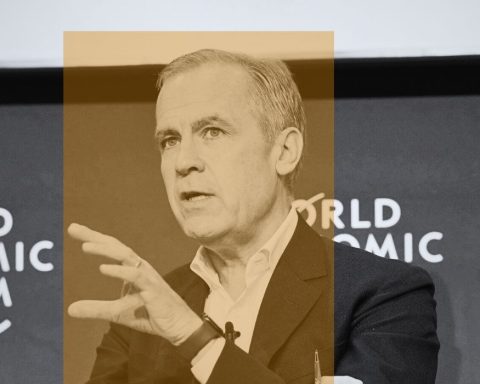TD shareholders are currently voting on a proposal we recently co-filed at the bank alongside four other investors, including Nomura Asset Management U.K. The proposal asks for more meat on the bone to tell us how TD intends to meet its net-zero commitment, given that the bank’s current plans are vague and its real-world performance is heading in the opposite direction.
This issue is not unique to TD. Western banks have spent the last few years setting targets and measuring their financed emissions – that is, the emissions resulting from their lending, investments and underwriting. The numbers are huge, indicating that banks face massive transition risk as the economy decarbonizes and corporate clients adapt, or fail.
Now comes the hard part. What are they going to do about it? Unfortunately, what we’ve been told so far by the banks doesn’t measure up. TD and other banks produce hundreds of pages of climate reports that talk about governance and processes but don’t tell us how their day-to-day business is going to change. Meanw hile, TD saw the largest jump in fossil fuel financing of any bank in the world in 2022 and ranked dead last in BloombergNEF’s low-carbon energy versus fossil fuel financing ratio out of 100 global banks measured.
Strip away the rhetoric and banks have four main things they can do to transition: portfolio realignment, client transformation, climate solutions investing, and positive public policy lobbying. Let’s flesh these out, using TD as the test case.
Portfolio realignment
Portfolio realignment is the obvious climate response, and the one that banks resist the most. Essentially it comes down to getting out of the business of serving high-carbon clients and into the business of serving low-carbon ones. Banks resist it because they can still make short- and medium-term profits serving fossil fuel companies that are driving the climate crisis, even as this leads to a tragedy of the commons that poses an existential threat to the banks themselves via economic and societal disruption.
Most banks, including TD, therefore only tinker around the edges of portfolio realignment, making commitments that don’t change their books much, like saying that they won’t fund oil and gas activity in the Arctic or that they won’t take on “new” coal clients (while keeping their existing ones). They won’t even commit to ending financing of oil and gas expansion, which takes the bank in the opposite direction to net-zero. Some banks, though, do make more substantive commitments in this regard; for example, BNP Paribas has set a target to reduce its financing exposure to oil and gas.
Client transformation
Client transformation is the next potential strategy. Instead of replacing clients, this involves making them better. The challenge here is that the banks are not in the power position in this conversation, seeking to profit from clients who can go elsewhere. This is why banks call this “client engagement” and resist clarity regarding their assessment of clients’ carbon progress and accountability measures should clients refuse to change.
This year, TD joins other Canadian banks in articulating the kinds of things it looks for when assessing client climate plans – yet stops short of establishing a clear framework based on the kind of work done by bodies like the U.K.’s Transition Plan Taskforce. It also includes no measures to hold itself or its clients accountable for progress, referring only to vague “discussions” and to “share resources” with those not setting targets. TD peers RBC and BMO at least float the prospect of dropping clients who don’t advance.
Climate-solutions investing
Climate-solutions investing is something that TD and most banks claim to be doing at scale. TD has set a $500-billion Sustainable & Decarbonization Finance Target that sounds incredibly impressive and mirrors similar commitments set by the other banks. With so much money being put into green finance, that’s the climate problem sorted, right?
Unfortunately, as our recent securities complaint on this topic points out, the banks have no way of proving that this financing is “sustainable” or that it is actually “decarbonizing” anything since they don’t report on any emissions impacts. In fact, there are several deals done under this label that have increased emissions instead of reducing them. At its core, sustainable finance is a business segment for the banks designed to profit from ESG concerns in the marketplace. Likely in response to our complaint, three Canadian banks, including TD, admitted in their recent climate disclosures that they cannot say that sustainable finance reduces emissions – though it remains featured as a key pillar of TD’s climate plan.
An alternative to vague “sustainable finance” is setting more specific financial targets that matter. One example is adopting a target for renewables financing. Another is equity investing by banks in climate solutions, which puts them in a controlling position to ensure positive emissions outcomes. BMO and CIBC have had such funds for a few years, and RBC joined them this year by pledging a billion dollars toward this. To make it real, the banks need to marry these financial commitments with credible impact reporting.
Lobbying
Finally, banks can help drive progress to their own net-zero targets by lobbying for public policy that enables this progress. Each says that it relies on factors beyond its control that will shape the emissions profiles of its clients, but few then follow up by saying they will add their considerable lobbying might to influence these factors. Case in point: banks will make little progress decarbonizing their mortgage portfolios without better provincial and municipal building codes. So, are they asking for them?
TD says that it has created an ESG Advocacy Executive Forum, “to align on advocacy activities and facilitate co-ordination of our engagement efforts,” but it doesn’t say what those advocacy or engagement efforts are. InfluenceMap recently gave TD a D+ on lobbying, noting that the bank has generally limited its overt climate lobbying to financial disclosure issues but that alongside the other big Canadian banks it retains memberships in several industry associations “that have engaged in opposition to real-economy climate policies in Canada and globally.” TD is also a member of the very anti-climate U.S. Chamber of Commerce and makes political donations to dozens of U.S. politicians, including climate denier J.D. Vance.
Overall, in the four main ways that banks can drive toward net-zero, TD is doing little – and in some cases pushing in the wrong direction. This gives investors no confidence that the bank is on track to meet its own commitment.
While our shareholder proposal is filed with TD this year, it could equally be filed with any of Canada’s large banks that suffer the same shortcomings. This brings us to a final conclusion. There is a systemic failure in Canada’s banking system to drive toward net-zero, which poses a growing risk that regulators must address. We should not have to rely on shareholder proposals like ours (the results of which will be revealed at TD’s annual general meeting on April 18) to get banks to do more on this front. Other jurisdictions like the United States, the European Union and the United Kingdom are ahead of Canada in requiring more details from their banks, and we need the Office of the Superintendent of Financial Institutions to follow suit.
Matt Price is executive director of Investors for Paris Compliance and and Kyra Bell-Pasht is its director of research and policy.







